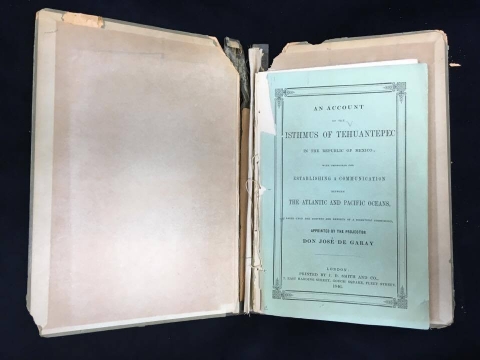An Account of the Isthmus of Tehuantepec in the Republic of Mexico
An account of the isthmus of Tehuantepec in the Republic of Mexico : with proposals for establishing a communication between the Atlantic and Pacific oceans : based upon the surveys and reports of a scientific commission appointed by the projector, Don José de Garay
In the decade before the American Civil War, the United States was preoccupied by efforts for interoceanic communication. The Isthmus of Tehuantepec represented the shortest distance between the Gulf of Mexico and the Pacific Ocean, and prior to the opening of the Panama Canal, was a major shipping route. It was during negotiations to end the Mexican war of 1846-1848 that the United States began discussing ways in which the route could be accessed or purchased. Nicolas P. Trist, in charge of the negotiations for the U.S., offered to pay thirty instead of fifteen million dollars for Upper and Lower California and New Mexico if he could also have the right of passage and transit over the Isthmus. Unfortunately, this proposal was rejected point-blank as the privilege of constructing a way of communication across the Isthmus of Tehuantepec had already been given to Don José de Garay (1801-1858), the author of this text. Garay made a survey of the land which was finished in February of 1843. The results of the survey were compiled in An Account of the Isthmus of Tehuantepec in the Republic of Mexico, published in 1846 in both English and Spanish. This text provides Garay's own perspective on his plans for the future of the Isthmus of Tehuantepec. The story of the Isthmus of Tehuantepec is intermingled with the history of the United States, Mexico, technology, science, and exploration.
This is a mid-19th century side sewn pamphlet in an acidic pamphlet binding. Conservators will remove the side sewing and resew the textblock. The original cover will be repaired and the pamphlet rehoused in an acid-free custom enclosure.
Discover more about this book in our Catalog.
Adoption Type: Preserve for the Future

